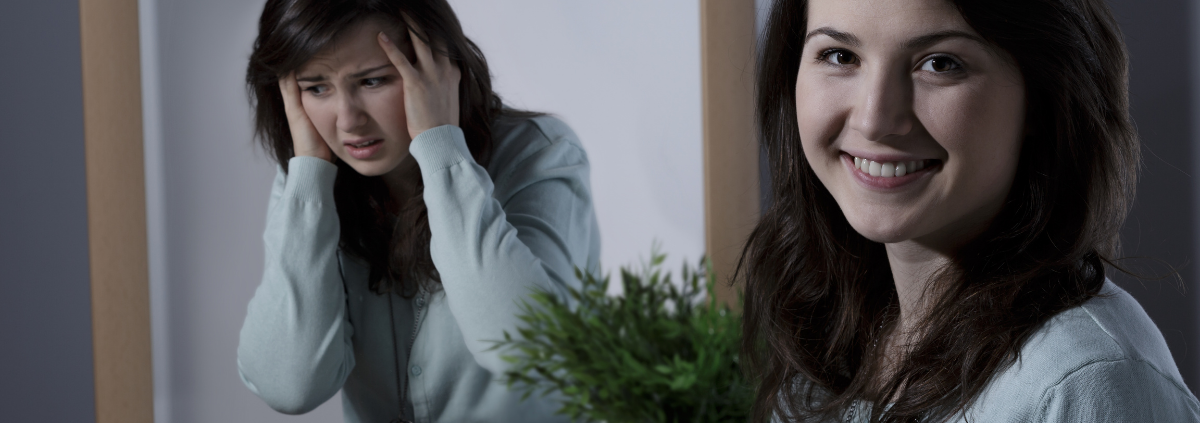Key Differences Between BPD and Bipolar Disorder
According to the American Psychiatric Association, mental illness is a health condition defined by “changes in emotion, thinking or behavior (or a combination of these).” Having a mental illness is absolutely nothing to be ashamed of. In fact, nearly one in five adults in the U.S. experience some form of mental illness each year.
When left untreated, a mental health condition can completely disrupt everyday life – impeding one’s ability to interact with others, care for family and work. Similar to physical conditions, such as asthma or diabetes, seeking treatment and support are vitally important for coping with symptoms.
There are two specific disorders that people tend to confuse with one another – bipolar disorder and borderline personality disorder (BPD). While they may have some overlapping symptoms, the ailments are two completely separate diagnoses. Here’s a look at the differences between BPD and bipolar disorder.
BPD vs. Bipolar Disorder: What’s the Difference?
BPD, or borderline personality disorder, is a mental health condition that makes it difficult for people to regulate their emotions. The National Alliance on Mental Illness estimates 1.4% of adults in America are diagnosed with BPD.
Those experiencing BPD grapple with extended periods of intense emotion, leading to poor self-image, destructive behaviors and impulsivity. As a result, people with BPD have difficulties understanding and relating to others, self-regulating and maintaining stable relationships.
In comparison, bipolar disorder causes extreme mood swings that cycle between emotional highs (mania) and lows (depression). When speaking about bipolar disorder, Mayo Clinic shares, “When you become depressed, you may feel sad or hopeless and lose interest or pleasure in most activities. When your mood shifts to mania or hypomania (less extreme than mania), you may feel euphoric, full of energy or unusually irritable. These mood swings can affect sleep, energy, activity, judgment, behavior and the ability to think clearly.”
These shifts in mood can last anywhere from a few days to a few months. Bipolar disorder is a more common mental health condition than BPD, impacting roughly 2.6% of adults.
Symptoms of BPD
Along with instability in behavior and mood, those grappling with BPD have a warped perception of how they see themselves. From issues forging interpersonal relationships with others to impulsive actions in both their personal and professional lives, symptoms of BPD include:
- A tendency to see things as one extreme or the other – a.k.a. Black or white thinking.
- Severe mood swings
- Unstable or distorted self-image
- Continuous and rapid changes in one’s opinions, values and/or interests
- Periods of intense anger
- Suicidal thoughts or self-harming behaviors
- Recurring patterns of intense and volatile relationships in which feelings rapidly shift between love and hatred
- Feelings of dissociation
- Intense fear of loneliness
- Reckless and impulsive behavior
- Inability to fully trust others
- Episodes of intense anxiety, depression or anger
As with any physical or mental illness, each person’s diagnosis is unique and they may not experience all the above-mentioned symptoms.
Symptoms of Bipolar Disorder
Those with bipolar disorder undergo intense mood swings, alternating between states of depression and mania.
Symptoms associated with depression may include:
- Anxiety or bouts of panic
- Feelings of worthlessness or even guilt
- Prolonged spells of sadness
- Fatigue
- Suicidal thoughts
- Changes in sleep or appetite
- Intense pessimism or feelings of indifference
- Socially withdrawn
- Inability to concentrate – even on simple things
- Irritability and anger
- Inexplicable aches and pains in the body
Symptoms commonly associated with mania include:
- Racing thoughts
- Impulsive or reckless behavior
- Heightened moods
- Irritability or aggression
- Inability to sleep
- Lack of judgment
- Inflated feelings of self-importance and confidence
- In severe episodes, some may experience hallucinations or delusions
Treatment & Support for Both Illnesses
A mental health professional, and specifically a bipolar therapist, will help diagnose patients who experience the above symptoms. Don’t be surprised to hear questions revolving around the severity, frequency, duration and types of symptoms you experience. A bipolar therapist will also inquire about details like your family history to help them identify the root cause of the issue at hand and devise a proper treatment plan moving forward.
When it comes to specific treatment options, it’s best to keep in mind that patience and time will be integral factors in managing your condition. For BPD, behavioral and therapy-related treatments are often used in conjunction with certain medications that help manage symptoms related to depression or anxiety.
As for bipolar disorders, your bipolar therapist may employ one or more treatments, such as psychotherapy, medication and health-related techniques like meditation and exercise.
While bipolar disorder and BPD have some overlapping symptoms, they are two different diagnoses. By seeking care, however, you’ll be better equipped with the tools and resources needed to manage symptoms and improve your overall quality of life.
Experiencing some of the above symptoms? If you believe you may have BPD or bipolar disorder, our mental health specialists are here to help you every step of the way. Contact us today to learn how we can provide you with the individualized care and support you need moving forward.


Leave a Reply
Want to join the discussion?Feel free to contribute!